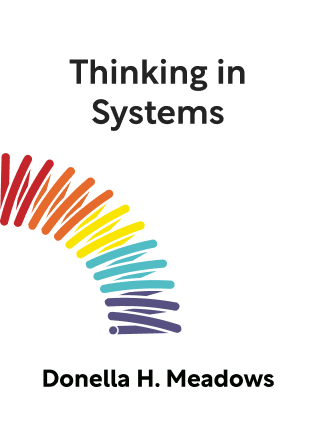

This article is an excerpt from the Shortform summary of "Thinking in Systems" by Donella H. Meadows. Shortform has the world's best summaries of books you should be reading.
Like this article? Sign up for a free trial here .
What are some examples of failed systems? Why did these systems fail?
There are many examples of failed systems throughout history. Businesses, government policy, social structure, and more e can be held as examples o failed systems.
Keep reading for the best examples of of failed systems and how they failed.
Examples of Failed Systems
There are several types of failed systems. This list provides examples of failed systems, as well as the type of failure they represent.
Escalation
Also known as: Keeping up with the Joneses, arms race
How It Happens
Two or more competitors have individual stocks. Each competitor wants the biggest stock of all. If a competitor falls behind, they try hard to catch up and be the new winner.
This is a reinforcing loop—the higher one stock gets, the higher all the other stocks aim to get, and so on. It can continue at great cost to all competitors until one or more parties bows out or collapses.
Examples of Escalation
Arms races are classic examples of escalation. During the Cold War, the Soviet Union and the United States monitored each others’ munitions and pushed to amass the larger arsenal. This was done at tremendous expense (trillions of dollars) and led to a drag on both economies, let alone the development of weapons that threaten humanity.
More pedestrian examples of escalation include:
- Advertising between competitors gets increasingly prevalent and obnoxious, to try to gain more attention.
- Restaurants get louder and louder as tables try to talk over each other.
Escalation can occur in the other direction as well, such as pricing wars where competitors progressively undercut each other in pricing.
The Rich Get Richer
Also known as: competitive exclusion, success to the successful
How It Happens
Two competitors have access to the same limited pool of resources. The winner gets a greater share of resources, which in turn allows the winner to compete even better, which then earns it more resources. On the other side, the loser gets progressively fewer resources, which makes the loser even less able to compete. Reinforcing feedback loops are at play here.
If this cycle is allowed to continue unabated, the losers will eventually be forced out of the game entirely. This outcome may be unhealthy and run counter to the goals of the whole system.
The Rich Get Richer
Examples
In ecology, one species can outcompete another, taking all the system resources to the point that the loser becomes extinct. (Shortform note: An example is an invasive species that reproduces so successfully it disrupts the local ecosystem.)
In commerce, a successful business can reinvest its profits into more technology, capacity, or political lobbying, which further enlarges its share of profits. Left unchecked, the business can become a monopoly.
The author also discusses this in the context of social inequality. The poor get poorer in a number of ways:
- The poor have access to worse education, which leads to worse job opportunities, which leads to lower incomes. Their children are born into poverty, perpetuating the cycle.
- They pay rent to landowners, who use the income to buy more land.
- The poor tend to organize politically less often, and so they are underrepresented in government spend and attention.
Drift to Low Performance
Also known as: eroding goals, boiled frog syndrome
How It Happens
The actor sets a performance bar that it tries to perform above. However, instead of keeping the bar fixed at an absolute level, the bar is actually set relative to previous performance.
If the actor performs under the bar, the bar is then set a bit lower. This might be excused by sentiments like, “Well, it’s not that much worse than last year” or “Well, everyone’s in trouble too, so we’re not doing that badly.”
And if the actor has a tendency to undershoot the bar, this leads to a vicious cycle that drags the performance down, possibly to complete failure.
This drift tends to happen at a gradual decline. A sharp decline would cause alarm and prompt a forceful correction. However, in a gradual decline, the actor tends to become complacent and forget how good things used to be.
Examples of Drift to Low Performance
A business that is losing market share can lower its targets and progressively lose share until it becomes bankrupt.
(Shortform note: Steve Jobs commented on why he was infamously harsh on hiring: “A players hire A players, but B players hire C players and C players hire D players. It doesn’t take long to get to Z players. The trickle down effect causes bozo explosions in companies.”)
Tragedy of the Commons
How It Happens
The actors in a system share a limited common resource. When the actor uses part of the resource, he receives all of the gain, but the cost of using the resource is spread among all the users. In sum, this usage is a net gain for the actor. Therefore, the rational behavior is to use as much of the resource as he can.
The problem is that all actors in the system are thinking this way too. As all actors act in their own self-interest, the common resource is eroded, possibly to the point of irrevocable destruction.
In essence, there is a weak feedback loop between the actor’s behavior and its future impact. It’s not clear the actor is behaving in a self-destructive way until it’s too late.
Examples of Tragedy of the Commons
The classic example is of a common pasture, where farmers each maintain a herd of cattle. Each farmer is incentivized to grow his herd—he gets all the benefit of the additional animal, but the cost of the animal’s grazing is shared by all the pasture owners. All farmers grow their herds as much as they can, and the tragedy arises when the pasture is destroyed and all the herds die from starvation.
Other examples include:
- Factories dumping pollution in a nearby river or land site. They gain all the benefit of removing the waste, while bearing only a small fraction of the environmental cost.
- Fishermen have the incentive to fish as much as they individually can, which can drive the fish species to extinction.
- Our collective use of fossil fuels may contribute to climate change, which can lead to devastating effects in the future.
Addiction
Also known as: dependence, shifting the burden to the intervenor
Examples of Addiction
Addictions occur when well-meaning interventions undermine the system’s ability to take care of itself:
- A farmer may try to increase his efficiency by planting a monoculture of a single crop and applying fertilizer to the soil, without developing a sustainable ecosystem. This makes the crop more susceptible to a blight. In response, the farmer applies more pesticides, which causes further destruction of the ecosystem and the ability of the field to maintain itself. Thus, more fertilizer and pesticides are needed.
- Elder care: families used to take care of their parents, until nursing homes and social security came along to relieve the burden. In response, people became dependent on these resources and became unable to care for their parents—they bought smaller homes and lost the skills and desire to care.
- A better healthcare system shifts the responsibility of personal healthcare away from the individual person and more toward the intervening doctor. (Shortform note: Imagine a world where a heart attack meant instant death. People would probably take better care of themselves. Once surgeries and stents are invented to rescue people from heart attacks, people feel less need to take care of themselves, which might in turn increase the rate of heart attacks. And as more heart attacks occur, more medical technology is developed to support them, and so on.)
- (Shortform example: A well-meaning parent may financially support her adult child, helping them get off their feet. However, this might weaken the child’s ability or desire to generate his own income, thus becoming even more dependent on financial assistance.)
Policies that cause addiction are deceptive—they are often well-meaning, seem like they solve the problem, and may have consequences that are hard to foresee (unless you map out the system).
Rule Beating
Also known as: Following the letter of the law, but not the spirit
How It Happens
A system has a goal, and it sets rules in place to try to achieve the goal. However, the actors in the system will try to evade the rules. They’ll find technicalities that let them stay nominally compliant but behave in a way that violates the intent of the rules.
This effect gets worse when the rules are designed especially poorly, so that the evasive behavior totally contradicts the system’s goals.
Examples of Rule Beating
- Departments (in government and corporations alike) are allocated budget based on what they use. If the department has budget left over at the end of the year, its budget the following year is reduced. This is a well-meaning rule to try to cut costs. However, it promotes inefficiency and wasteful spending at the end of the year.
- Wildlife protection laws in the U.S. prevent development on land containing endangered species. So when land developers discover endangered species on their property, they often kill the animals to open up development.
Optimizing for the Wrong Goal
Also known as: “Be careful what you wish for.”
How It Happens
Optimizing for the wrong goal is the conceptual opposite of rule beating. Here, a goal is defined incompletely or inaccurately, so that progress toward the goal doesn’t lead to the desired result.
Examples of Optimizing for the Wrong Goal
A common theme is confusing motion with progress.
- If a country’s national security is defined as national security spending, you will get national security spending. You may or may not get actual national security. In fact, national security might be worse, since the defense spending detracts from investment elsewhere.
- If education is defined as standardized test results, you’ll get standardized test results. You may or may not actually get an educated population.
These examples of failed systems can help you understand

———End of Preview———
Like what you just read? Read the rest of the world's best summary of Donella H. Meadows's "Thinking in Systems" at Shortform .
Here's what you'll find in our full Thinking in Systems summary :
- How the world, from bathtub faucets to fish populations, can be seen as simple systems
- The key system traps that hold back progress, such as escalating arms races and policy addiction
- Why seeing the world as systems can give you superpowers in work and life






